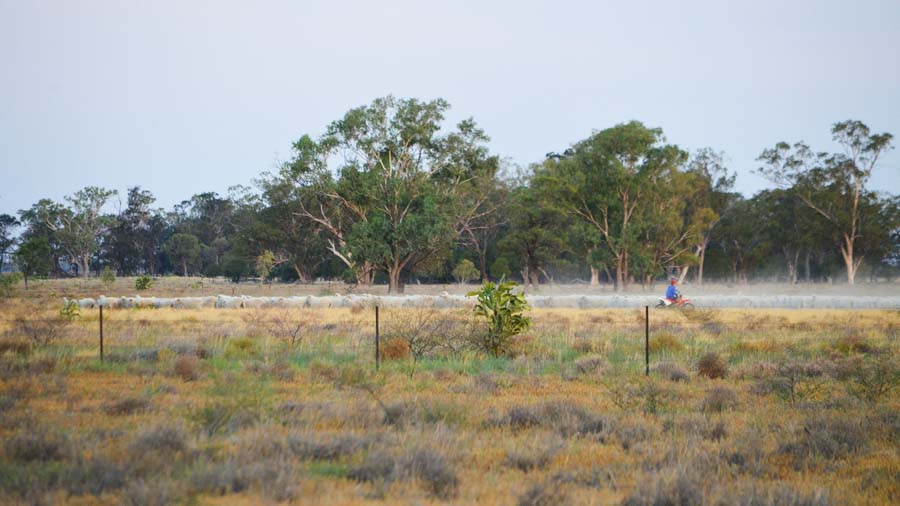Recent flooding, preceded by droughts, have created soil health challenges that need to be remedied. John tries to avoid artificial fertilisers, which can make this more difficult but not impossible to achieve. Maintaining ground cover during extreme climatic events can also be difficult.
John likes to use crop rotations to fix nitrogen into the soil, and when additional nitrogen is required he uses what he calls a 'more friendly' source of nitrogen, such as foliar sprays, in preference to synthetic urea granules.
John likes to use crop rotations to fix nitrogen into the soil and when additional nitrogen is required he uses what he calls a 'more friendly' source of nitrogen, such as foliar sprays, in preference to synthetic urea granules.
However, after recent flooding events his soils have been depleted of nitrogen and sulphur. In 2023, he's spreading ammonium sulphate to feed his soil much needed nitrogen and sulphur. 'It's a more expensive form of nitrogen than urea but it's more effective,' John says. 'There are less steps involved in making it plant available.' He also uses a lot of dressings, rather than fungicide, on seeds. 'I'm putting on worm extract and biological and mycorrhizal fungi to give the seed its own ability to find nutrients,' John says. This means that instead of spraying away the bad, John works hard to feed the good.
Retaining ground cover during the drought by reducing stock numbers also plays a role in maintaining long-term soil health.
These methods work well in normal years but can be challenged in dry and wet times. However, John is not afraid to try different products or techniques or to use more conventional methods when required. Drought and floods put significant pressure on soil health and so John is on a constant journey to find new ways to improve soil health.
John says he isn't good at monitoring soil health but anecdotally he can see many positive changes. He reports there is a lot less runoff and they have have much better infiltration rates.
While John is pleased with the results of his shift towards a more holistic management approach, he's quick to credit the incredible support he's had along the way, from the trainers at RCS Australia to the passionate team at North West Local Land Services. When it comes to accessing knowledge and even funding, John's learned that it's out there, 'you just need to ask around and get connected to the right people as it will save you a lot of time and put you in control faster than going it alone.'
All these years on from his attendance at the RCS Grazing for Profit School John has a range of new skills and tools to manage problems and create positive change on his farms.
However, the greatest tool the school provided was introducing him to three other farmers who attended that same course in 2003. The group have now spent decades keeping each other on track and have become an important part of each other's success.
They're on call to help each other out with practical solutions and sometimes just an understanding ear in tough times like drought.
'This has been truly valuable,' John says. 'All farmers should have mentors or a group of people to talk to and objectively look at each other's businesses.'



